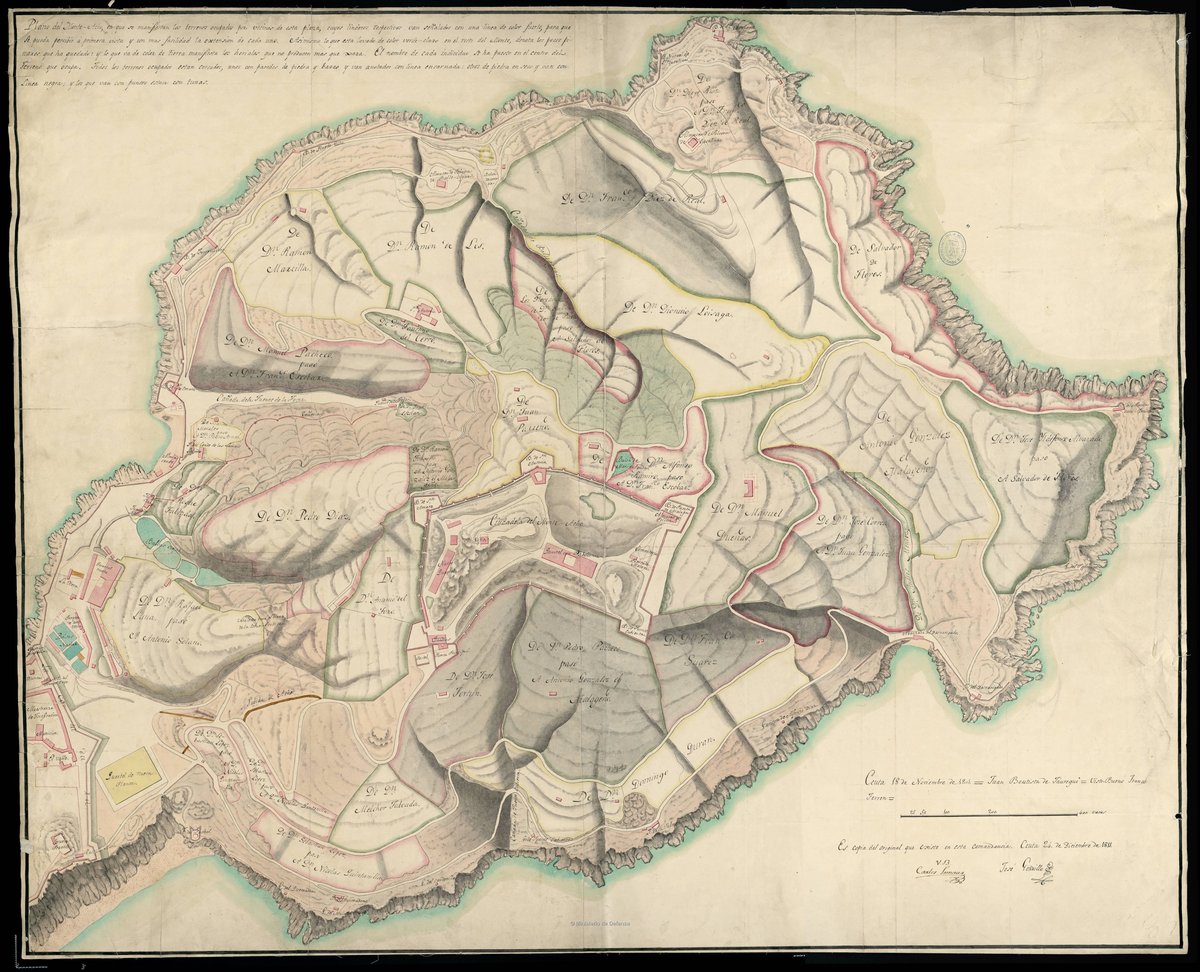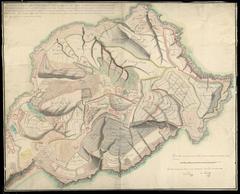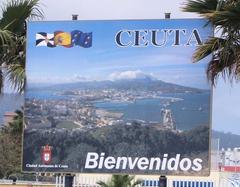
Visiting Fortaleza del Hacho: Hours, Tickets, and Historical Insights
Date: 01/08/2024
Introduction
The Fortaleza del Hacho, perched on Monte Hacho in Ceuta, Spain, is a testament to the region’s complex and rich history. This fortress has stood as a silent witness to numerous historical events, from its early Byzantine origins to its role in the Spanish-Portuguese conflicts. Its strategic location, offering panoramic views of the Strait of Gibraltar and the Mediterranean Sea, underscores its enduring military significance through the centuries. The fort’s construction and subsequent expansions reflect the various cultural and political influences that have shaped Ceuta, making it a fascinating destination for history enthusiasts and casual visitors alike. This comprehensive guide aims to delve into the fortress’s historical significance, provide practical visitor information, and highlight nearby attractions to enhance your visit, ensuring a thoroughly enriching experience. (Wikipedia, The Complete Pilgrim, Ceutaturistica)
Table of Contents
- Introduction
- Historical Background
- Early Origins and Byzantine Influence
- Omeya Period and Arab Conquest
- Portuguese and Spanish Control
- 16th to 18th Century: Expansion and Fortification
- 18th Century: Major Rebuilding Efforts
- 19th Century: Penal Colony and Further Modifications
- 20th Century: Military Significance and World Wars
- Modern Era: Preservation and Tourism
- Visitor Information
- Architectural Features and Defensive Structures
- Comparative Fortifications
- FAQ
- Conclusion
Historical Background
Early Origins and Byzantine Influence
The origins of the Fortaleza del Hacho can be traced back to ancient times, with evidence suggesting that the site was occupied by a Roman or Byzantine fortification. By the year 534, a Byzantine garrison was already established at the location that would later become the city of Ceuta (Wikipedia). This early fortification laid the groundwork for the strategic importance of Monte Hacho, which would continue to be a significant military site through various historical periods.
Omeya Period and Arab Conquest
During the Omeya period of the Arab conquest, the fortification reached its largest dimensions. Although there was no significant population settlement near the castle at that time, the fort’s strategic importance was recognized and utilized by the ruling powers (Wikipedia). The fortification’s role during this period was primarily defensive, serving as a stronghold against potential invasions.
Portuguese and Spanish Control
The Fortaleza del Hacho’s modern history began in 1415 when Portuguese adventurers captured Monte Hacho. The fort switched hands between the Portuguese and Spanish several times, reflecting the turbulent colonial history of the region. Despite these changes in control, the fort remained an enclave of European powers, tasked with defending the city of Ceuta (The Complete Pilgrim).
16th to 18th Century: Expansion and Fortification
Throughout the 16th, 17th, and 18th centuries, Ceuta and the Fortaleza del Hacho became targets for rival naval powers, including France and the Barbary pirates. To protect their territory, the Spanish expanded and strengthened the fort, making it one of the most formidable fortifications in North Africa (The Complete Pilgrim). The fort’s strategic location allowed it to control travel between Africa and Europe at its narrowest point, further emphasizing its military significance.
18th Century: Major Rebuilding Efforts
In the mid-18th century, significant rebuilding efforts were undertaken to modernize the fort. In 1773, under the proposal of Juan Caballero, the fort was expanded to include forty towers, a new barracks for two hundred soldiers, and a powder magazine capable of holding two hundred quintals (Wikipedia). These enhancements were designed to bolster the fort’s defensive capabilities in response to the evolving nature of military technology and threats.
19th Century: Penal Colony and Further Modifications
By 1870, the Fortaleza del Hacho had been converted into a penal colony. The 1849 Prison Law stipulated that those sentenced to life imprisonment would serve their sentences in Ceuta and other smaller African prisons (Wikipedia). During this period, the fort underwent further modifications to accommodate its new role as a prison. However, its function as a penal colony was eventually abandoned, and the fort was repurposed as an anti-aircraft artillery barracks.
20th Century: Military Significance and World Wars
The Fortaleza del Hacho continued to play a crucial military role into the 20th century. It remained a key outpost of the Spanish army and witnessed significant historical events, including the outbreak of the Spanish Civil War in North Africa in 1936 (The Complete Pilgrim). During World War II, Ceuta and its fort were among the few havens in the region that escaped the ravages of both the Nazis and the Allies, underscoring its strategic importance.
Modern Era: Preservation and Tourism
Today, the Fortaleza del Hacho remains an active military installation, one of the few fortifications built before the 20th century that is still in use. Despite its ongoing military function, the fort has become one of Ceuta’s most popular tourist destinations. Visitors can explore the exterior of the fort and enjoy close-up views, although the interior remains off-limits due to its active status (The Complete Pilgrim).
Visitor Information
Visiting Hours and Tickets
The Fortaleza del Hacho is open to visitors from Tuesday to Sunday, 10:00 AM to 6:00 PM. Entrance tickets can be purchased at the main gate or online through the official website. General admission is €5, and discounts are available for students, seniors, and groups.
Travel Tips
- Getting There: The fort is accessible by car, with parking available on-site. Public transportation options include local buses and taxis.
- Best Time to Visit: Early morning or late afternoon visits are recommended to avoid the midday heat and enjoy the best lighting for photography.
- Guided Tours: Guided tours are available and highly recommended for a more in-depth understanding of the fort’s history and architectural features.
Nearby Attractions
- Parque Marítimo del Mediterráneo: A beautiful park featuring lagoons, gardens, and swimming pools, perfect for a relaxing day out.
- Museo de Ceuta: This museum offers fascinating exhibits on the history and culture of Ceuta, providing context to your visit to the Fortaleza del Hacho.
- Monte Hacho: Adjacent to the fort, this hill offers hiking trails and panoramic views of the Strait of Gibraltar and the Mediterranean Sea.
Accessibility
The Fortaleza del Hacho is partially accessible to visitors with disabilities. While the exterior areas and some viewpoints are accessible, the interior and more rugged parts of the fort may present challenges. It is advisable to contact the fort’s administration in advance for specific accessibility information.
Architectural Features and Defensive Structures
The fort covers an area of 10 hectares and includes more than forty circular towers from the Omeya period. In the 18th century, five artillery bastions were constructed: the Málaga Gate, San Antonio, San Amaro, Tenaza (comprising two bastions at a 90° angle), and Fuente Cubierta. Each bastion could accommodate four medium-sized cannons and featured sentry boxes and, in some cases, modern bunkers on top (Wikipedia).
Comparative Fortifications
The strategic importance of the Fortaleza del Hacho is mirrored by other significant fortifications built by European powers in the region. For instance, the British fortifications on the opposite shore at Gibraltar were equally impressive and served a similar purpose in controlling naval access between the Mediterranean and the Atlantic (The Complete Pilgrim). Another notable fort from the same era is the Santa Cruz Fort overlooking the city of Oran in neighboring Algeria, which was also constructed by the Spanish during their expansion along the Maghreb coast (The Complete Pilgrim).
FAQ
Q: What are the visiting hours for the Fortaleza del Hacho? A: The fort is open from Tuesday to Sunday, 10:00 AM to 6:00 PM.
Q: How much is the entrance fee? A: General admission is €5, with discounts available for students, seniors, and groups.
Q: Is the Fortaleza del Hacho accessible to visitors with disabilities? A: The fort is partially accessible. It’s advisable to contact the administration for specific accessibility information.
Conclusion
The historical background of the Fortaleza del Hacho is a testament to its enduring strategic importance and resilience through various historical periods. From its early origins as a Byzantine fortification to its modern role as an active military installation and tourist attraction, the fort has played a pivotal role in the defense and control of the region. Its architectural features and historical significance make it a fascinating site for visitors and historians alike. Plan your visit to the Fortaleza del Hacho today and step back in time to explore one of Ceuta’s most significant historical sites. (Wikipedia, The Complete Pilgrim, Ceutaturistica, Spain.info, CNN Travel)
References
- Wikipedia. (n.d.). Fortaleza del Hacho. Retrieved from https://es.wikipedia.org/wiki/Fortaleza_del_Hacho
- The Complete Pilgrim. (n.d.). Fortaleza de Hacho. Retrieved from https://thecompletepilgrim.com/fortaleza-de-hacho/
- Ceutaturistica. (n.d.). Fortaleza del Hacho. Retrieved from https://www.ceutaturistica.com/fortaleza/fortaleza.html
- Spain.info. (n.d.). Monte Hacho Fortress. Retrieved from https://www.spain.info/en/places-of-interest/monte-hacho-fortress/
- CNN Travel. (n.d.). Ceuta: Spain in North Africa. Retrieved from https://edition.cnn.com/travel/ceuta-spain-north-africa/index.html
- Adventure in You. (n.d.). Best Time to Visit Spain. Retrieved from https://www.adventureinyou.com/spain/best-time-to-visit-spain/
- North Trotter. (n.d.). Melilla and Ceuta: A Travel Guide to the Two Spanish Cities in North Africa. Retrieved from https://northtrotter.com/2024/05/19/melilla-and-ceuta-a-travel-guide-to-the-two-spanish-cities-in-north-africa

